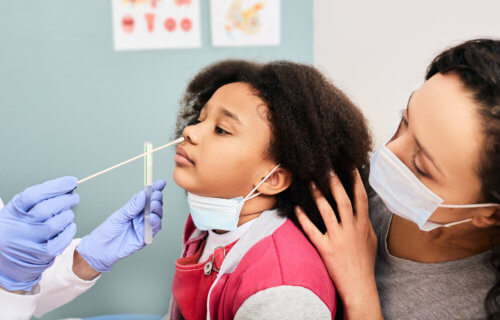BRISBANE, Australia — Throughout the pandemic, children have been more resistant to COVID-19 than adults. Now, scientists may know why. A team from the University of Queensland say the very lining of children’s noses is better at impeding SARS-CoV-2 infections than adult noses.
According to Dr. Kirsty Short from UQ’s School of Chemistry and Molecular Biosciences, these findings may partially explain why children’s immune responses are generally superior when it comes to avoiding and fighting COVID.
“Children have a lower COVID-19 infection rate and milder symptoms than adults, but the reasons for this have been unknown,” Dr. Short says in a university release. “We’ve shown the lining of children’s noses has a more pro-inflammatory response to the ancestral SARS-CoV-2 than adult noses. But we found it’s a different ball game when it come to the Omicron variant.”
This research is based on an analysis of nasal lining cells collected from 23 healthy children and 15 healthy adults. Study authors exposed those cells to SARS-CoV-2. The ensuing results revealed the virus wasn’t able to replicate as efficiently in the children’s nasal cells, as well as a heightened antiviral response.
The research team can’t say for sure why this is the case, but they have a number of working theories.
“It could be an adaptation to the increased threats of ‘foreign invaders’ such as viruses or bacteria observed in childhood,” Dr. Short explains. “It’s also possible that increased exposure to these threats in childhood ‘trains’ the nasal lining in children to mount a stronger pro-inflammatory response. Or alternatively, metabolic differences between children and adults could alter how virus-fighting genes express themselves.”
Which variant do kids fight off the best?
Notably, the study also found that COVID’s Delta variant was significantly less likely to replicate in the nasal cells of children in comparison to adult nasal cells. However, this trend was far less pronounced with the Omicron strain.
“Taken together, it shows children’s nasal lining supports lower infection and replication of ancestral SARS-CoV-2, but this may be changing as the virus evolves,” Dr. Short concludes. “Future clinical studies will be needed to validate these preliminary findings in a larger population and to determine the role of other factors, such as antibodies in protecting children from SARS-CoV-2 infection.”
The study is published in the journal PLoS Biology.

